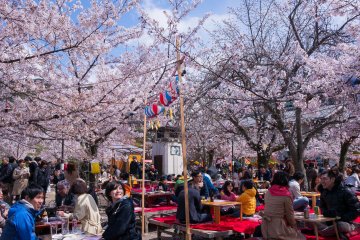

Kiyomizu-dera Temple was founded in 778. Its history dates back over 1200 years. As a sacred place where the great compassion of the deity Kannon prevails, the temple has long been open to citizens of all classes.
Thirty Buddhist buildings stand on the site, which extends over 130,000 square meters along the central slope of Otowa Mountain in the eastern part of Kyoto, including the Main Hall of the National Treasure and many other important cultural assets. Most buildings have been destroyed by fire more than ten times since their inception. Thanks to the help of the temple believers, they have been rebuilt over and over again. Most of the current buildings were rebuilt in 1633.
In 1944, the Kiyomizu-dera Temple was added to the UNESCO World Heritage List as one of the historical monuments of ancient Kyoto.
By City Bus: Get off at the Gojozaka Stop on Route 206 bound for Higasihama-dori Kitaoji Bus Terminal or Route 100 bound for Kiyomizu-dera Gion/Ginkaku-ji and walk 10 minutes. The bus can be crowded, especially after 11am and on weekends and Spring/ Autumn. Alternate route is Keihan train to Gojo and 15 minute walk via Sannenzaka, or catch a taxi.

Kodaiji (高台寺) is located northeast of the Yasaka Hokanji Temple at the foot of the Higashiyama Ryozen Mountains in Kyoto. The official name of the temple is Kodaiji-Jushozenji Temple. In 1606, the temple of Kita-no-Mandokoro was dedicated in memory of her late husband. Kita-no-Mandokoro was also known as nene. The Kaisando (Founder's Hall), Otama-ya (Sanctuary), Kasatei (Tea House), Shiguretei (Tea House), Omotetmon (Gate to the Sanctuary), and Kangetsudai (Moon Viewing Pavilion) are designated as important cultural assets in Japan. The temple garden is said to have been designed by the landscape gardener Kobori Enshu (1579-1647). The Japanese government has designated the garden as a historic site and a place of scenic beauty. The interior of the main building was originally painted with lacquer and covered with exquisite gold decorations. However, the current building was rebuilt in 1912 after several fires. Kodai-ji hosts modern art exhibitions in spring and fall. These are set up in the rock garden in front of Houjyo and are creatively illuminated at night.

Maruyama Park is the oldest public park in Kyoto and a popular springtime cherry blossom viewing spot. It opened in 1886 and is located next to Yasaka Shrine in Higashiyama District. The park was laid out by the well-known gardening expert Ogawa Jibee (1860–1933). As it is one of the most popular places for hanami in Kyoto, it can get quite crowded during the high season in April. The main attraction of the park is a beautiful weeping cherry that is illuminated at night. In the southwest of the park is the Chorakukan Villa, which the Japanese tobacco king Murai Kichibee had built. This property is now used as a hotel.

The Yasaka Cry, located in the Gion district in Kyoto, is often referred to as the Gion Shrine. The shrine is one of the most famous shrines in the city of Kyoto and is located at the end of Shijo-dori Street. The grounds of the shrine include several buildings and gates. Including the main hall and also a stage. Every year, Yakasa Shrine hosts numerous events and festivals that are important to the Japanese and is a popular destination for many visitors to Kyoto City. The Yasaka Shrine respects the gods Susanoo-no-mikoto, Kushiinadahime-no-mikoto, and Yahashira-no-mikogami. Above all, Susanoo-no-mikoto is an important god in Japanese mythology, known for his victory over Yamata-no-orochi (a great serpent with eight heads: a symbol of numerous disasters).